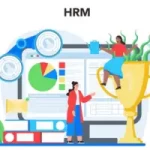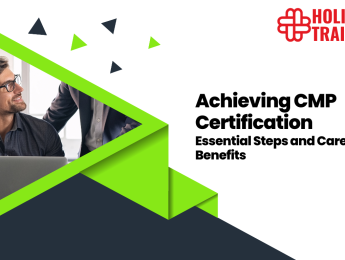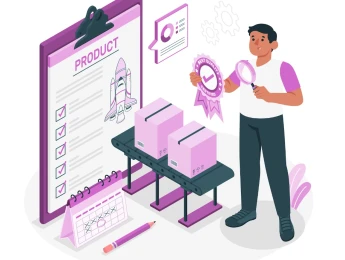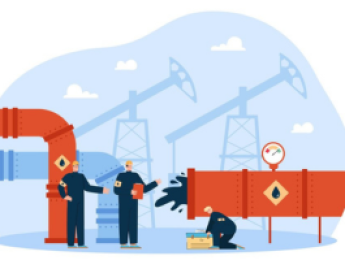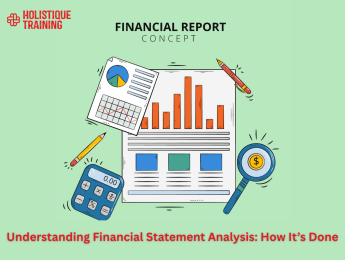- Table of Contents
- Introduction
- The Warwick Model: Illuminating the Internal Environment
- a. Stakeholders
- b. Goals
- c. Context
- d. Content
- The Guest Model: Understanding the Impact of External Environment
- a. Competitive Strategy
- b. Business Environment
- c. Workforce Characteristics
- d. Labour Market
- e. Government Regulations
- f. Union Influence
- Impact of the Internal Environment on HR Management
- a. Organisational Culture
- b. Leadership Style
- c. Organisational Structure
- d. Resource Allocation
- Impact of the External Environment on HR Management
- a. Technological Advancements
- b. Demographic Shifts
- c. Social and Cultural Influences
- d. Economic Conditions
- Conclusion
Introduction
In the dynamic landscape of today's business world, organisations strive to maximise their competitive advantage by capitalising on their most valuable asset: human resources. However, the management of human resources is not an isolated endeavour. Both internal and external environmental factors profoundly influence it. In this blog post, we will delve into the significant impact of the environment on human resources management, exploring the role of the Warwick Model and Guest Model, as well as the ramifications of the internal and external environment.
The Warwick Model: Illuminating the Internal Environment
The Warwick Model, developed at the University of Warwick, provides an invaluable framework for understanding an organisation's internal environment and its impact on human resources management. This comprehensive framework elucidates the interconnectedness of stakeholders, goals, context, and content.

a. Stakeholders
At the nucleus of the Warwick Model lies the recognition that stakeholders are not merely passive observers but active contributors to the fabric of organisational life. Employees, managers, executives, and shareholders form a diverse spectrum of stakeholders, each wielding a unique influence on human resources management. Understanding the intricacies of this stakeholder landscape is akin to deciphering the organisational DNA.
Stakeholders influence HR practices in myriad ways. For instance, employees shape the demand for training programs based on their skill development needs, while executives drive strategic alignment and resource allocation. Shareholders, focusing on performance metrics and long-term goals, contribute to the overall trajectory of HR strategies. Recognising each stakeholder group's distinct needs and expectations is imperative for crafting HR policies that resonate with the broader organisational vision.
b. Goals
Organisational goals serve as the compass guiding the journey of human resources management. Whether the focus is on operational efficiency, fostering innovation, or cultivating a customer-centric ethos, these goals permeate every facet of HR strategy. The strategic alignment between overarching organisational goals and HR practices ensures a harmonious progression towards shared objectives.
Consider a scenario where an organisation prioritises innovation. In such a context, HR practices would likely be tailored to encourage creativity and continuous learning. Training programs may focus on enhancing employees' creative thinking skills, and recruitment strategies might seek out individuals with a track record of innovative thinking. The interconnectedness between goals and HR practices underscores the model's practical utility in navigating the ever-changing organisational landscape.
c. Context
The context within which an organisation operates is akin to the atmospheric conditions shaping its internal ecosystem. The Warwick Model recognises that this context, comprising industry trends, economic conditions, and legal frameworks, is not a passive backdrop but an active force influencing HR decision-making. Organisations operating in dynamic industries may adopt flexible HR policies to swiftly adapt to emerging trends, while those in highly regulated sectors must ensure strict compliance in their practices.
Consider the impact of economic conditions on HR decision-making. Organisations may reevaluate their recruitment strategies during economic downturns, opting for cost-effective solutions or prioritising internal talent development. The model prompts organisations to proactively consider the contextual factors shaping their internal environment, fostering agility in the face of external changes.
d. Content
The content of human resources management, encompassing recruitment, selection, training, compensation, and performance management, forms the substance through which organisational goals and stakeholder expectations are translated into actionable practices. The Warwick Model recognises that the internal environment plays a pivotal role in determining the design and implementation of these practices.
For example, training programs may be extensive and tailored to individual needs in a culture that values employee development. Compensation structures may reflect a commitment to recognising and rewarding performance. Aligning content with the internal environment ensures that HR practices resonate with the organisation's cultural ethos and strategic direction.
Organisational Goal | Corresponding HR Content |
Operational Efficiency | Streamlined recruitment and selection processes |
Fostering Innovation | Robust training programmes for creativity and learning |
Customer-Centricity | Performance management focused on customer satisfaction |
Employee Development | Comprehensive training and career progression programs |
Cost-effectiveness | Cost-effective compensation and benefits strategies |
Table 1: Alignment of HR content with organisational goals
The Warwick Model serves as a holistic guide, offering organisations a nuanced understanding of their internal environment's intricate web. By acknowledging the pivotal roles played by stakeholders, goals, context, and content, organisations can navigate the complexities of human resources management with strategic foresight and adaptability. This model transcends the traditional boundaries of HR management, positioning it as a dynamic and responsive function deeply embedded in the broader fabric of organisational life.
The Guest Model: Understanding the Impact of External Environment
The Guest Model, developed by David Guest, further expands our comprehension of human resources management by focusing on the impact of the external environment. This model introduces six key dimensions that unravel the profound influence of external factors on HR practices.
a. Competitive Strategy
An organisation's competitive strategy is a powerful determinant in shaping its HR decisions. Whether an organisation is pursuing a cost leadership strategy, differentiation, or focusing on a niche market, the nuances of HR practices must align seamlessly with these strategic choices. For instance, an organisation emphasising cost leadership may lean towards labour efficiency and cost-effective training methods to maintain a competitive edge.
The Guest Model prompts organisations to critically evaluate their chosen competitive strategy and adjust HR practices accordingly. It underscores the importance of synchronicity between the overarching business strategy and the specific tactics employed in talent management, workforce development, and performance appraisal.
b. Business Environment
The broader business environment, a dynamic tapestry woven with threads of globalisation, technological advancements, and market volatility, casts a profound shadow on HR management. Organisations must be agile, adapting HR practices to address emerging challenges and capitalise on new opportunities. This adaptability is crucial for sustained success in an era where the only constant is change.
For instance, the advent of digitalisation might necessitate revamping HR practices to incorporate technological advancements. The Guest Model challenges organisations to be proactive in understanding and responding to shifts in the business environment, fostering a culture of continuous improvement within human resources.
c. Workforce Characteristics
The characteristics of the workforce, including skill levels, diversity, and generational differences, emerge as pivotal influencers on HR management strategies. In the contemporary mosaic of the workforce, organisations must develop tailored approaches to attract, engage, and retain talent in diverse work environments. Recognising the multifaceted nature of workforce characteristics is essential for crafting HR strategies that resonate with employees' evolving needs.
Consider the impact of generational differences. With their unique expectations and work styles, Millennials and Gen Z may require different engagement strategies compared to the older workforce. The Guest Model prompts organisations to delve into these nuances, fostering a holistic approach to HR that transcends a one-size-fits-all mentality.
d. Labour Market
The ever-shifting labour market landscape, marked by supply and demand dynamics, skill shortages, and intense competition for talent, intricately shapes HR practices. Organisations must respond to these market conditions through effective recruitment and retention strategies. Proactive talent management becomes a competitive advantage and a necessity in attracting and retaining top-tier talent.
The Guest Model encourages organisations to be astute observers of the labour market, leveraging market intelligence to inform their HR strategies. Whether adjusting recruitment channels, reevaluating compensation structures, or fine-tuning employee value propositions, organisations employing the Guest Model are poised to navigate the complex terrain of the contemporary labour market.
e. Government Regulations
Legal frameworks and regulations governing employment practices wield considerable influence on HR management. Compliance with labour laws, anti-discrimination policies, and health and safety regulations is a legal obligation and a cornerstone of ethical and responsible organisational conduct. The Guest Model spotlights the need for HR practices to align seamlessly with the regulatory landscape.
For instance, changes in employment laws may necessitate updates to HR policies and procedures. The Guest Model acts as a compass, guiding organisations through the maze of legal requirements and ensuring that HR practices are effective, ethically sound, and legally compliant.
f. Union Influence
In environments where unions play a significant role, HR practices must be attuned to the dynamics of collective bargaining agreements, worker representation, and negotiation processes. Collaboration and engagement with union representatives become vital aspects of human resources management. The Guest Model recognises the importance of maintaining a delicate balance between organisational goals and the interests of employee representatives.
Consider a scenario where a union is negotiating for better working conditions. The Guest Model prompts organisations to approach these negotiations strategically, seeking solutions that align with organisational goals and employee welfare. By acknowledging the influence of unions, organisations employing the Guest Model are better positioned to foster positive labour-management relationships.
The Guest Model is a strategic roadmap urging organisations to understand and navigate the external factors shaping their HR landscape. By delving into the intricacies of competitive strategy, the business environment, workforce characteristics, the labour market, government regulations, and union influence, organisations can craft HR practices that are effective, adaptive, and responsive to the dynamic external environment. The Guest Model propels HR management into a realm of strategic foresight, ensuring that organisations thrive amidst the winds of change in the broader business landscape.
Impact of the Internal Environment on HR Management
The internal environment of an organisation has a multifaceted impact on human resources management. Let's explore a few key areas where the internal environment significantly shapes HR practices:
a. Organisational Culture
Organisational culture, the collective mindset and values employees share, profoundly influence HR policies and practices. A culture of engagement that fosters innovation and collaboration fosters a fertile ground for HR initiatives that align with these values. Robust training programs, participatory decision-making processes, and employee development opportunities become natural outgrowths of a culture that places a premium on individual growth and collaboration.
For instance, in a company that values innovation, HR might spearhead programs encouraging employees to think creatively, participate in cross-functional projects, and continuously upskill. The alignment between organisational culture and HR practices ensures that human resources strategies resonate with the workforce, contributing to a positive, high-performance work environment.
b. Leadership Style
The leadership style exhibited by top management has a cascading effect on HR management practices throughout the organisation. Transformational leaders prioritise employee growth, empowerment, and open communication, creating a culture conducive to talent development and engagement. Their leadership permeates HR initiatives, emphasising the importance of continuous learning, mentorship, and employee well-being.
Leadership development initiatives become integral in fostering the desired leadership qualities throughout the organisation. The internal environment, shaped by leadership values and practices, sets the tone for HR strategies that attract top talent and nurture and retain high-potential individuals who align with the organisational ethos.
c. Organisational Structure
The organisational structure determines the flow of authority, communication channels, and decision-making processes. HR practices, such as performance management and career progression, must align with the structure to ensure efficiency and effectiveness. In a flat organisational structure, where decision-making is decentralised, HR initiatives may promote autonomy and cross-functional collaboration.
Consider a scenario where an organisation adopts a matrix structure, where employees report to functional and project managers. HR practices in such an environment might prioritise skills development that aligns with the demands of diverse project teams. The internal environment, defined by organisational structure, becomes a blueprint for HR strategies that optimise workflow and foster collaboration.
d. Resource Allocation
The allocation of resources, including budgetary provisions for HR initiatives, directly impacts the extent to which organisations invest in human capital development. Adequate resource allocation empowers HR to implement effective training programs, competitive compensation strategies, and initiatives that enhance employee well-being. Conversely, constrained resources may necessitate prioritisation and creative solutions to meet HR objectives.
Strategic resource allocation ensures that HR initiatives align with organisational goals, emphasising the importance of investing in the workforce for long-term success. Whether it's allocating funds for employee training, wellness programs, or recruitment efforts, the internal environment dictates the level of commitment an organisation places on human capital development.
Impact of the External Environment on HR Management
The external environment shapes HR practices in numerous ways, reflecting the dynamic nature of the business landscape:
a. Technological Advancements
Rapid technological advancements are a hallmark of the external environment, demanding continuous adaptation from HR departments. Automation, artificial intelligence, and data analytics are transformative forces that reshape recruitment processes, learning and development initiatives, and performance evaluation methods. Embracing these technological advancements is not just a matter of staying competitive but a strategic imperative for optimising HR efficiency.
For instance, AI-driven tools can streamline the initial stages of the recruitment process by screening resumes and identifying suitable candidates. Virtual reality and online learning platforms can revolutionise training and development programmes, ensuring employees acquire the skills necessary for an increasingly digitised workplace. The external environment challenges HR professionals to be at the forefront of technological integration, ensuring that HR practices remain agile in the face of rapid innovation.
If you’re interested in learning more about this, check out our course, ‘Future Changes in Human Resources: AI in a Post-COVID-19 World’.
b. Demographic Shifts
Changing demographics, marked by an ageing workforce and the rise of millennials and Gen Z, introduce new dynamics into HR practices. Organisations must foster an inclusive environment that addresses different generations' unique needs and preferences. Tailoring HR strategies to accommodate diverse generational perspectives becomes paramount for attracting, engaging, and retaining a multi-generational workforce.
For example, millennials often value work-life balance and opportunities for skill development, while an ageing workforce may appreciate flexible retirement options. The external environment prompts HR to adopt flexible policies that cater to the varied expectations of employees across different age groups, ensuring a harmonious and productive work environment.
c. Social and Cultural Influences
Evolving social and cultural norms directly impact HR management. The external environment demands that organisations embrace diversity and inclusion initiatives, accommodate flexible work arrangements, and foster a culture that respects and values individual differences. Addressing social and cultural influences becomes a matter of compliance and a strategic imperative for attracting top talent and enhancing employee satisfaction.
For example, organisations prioritising diversity and inclusion may implement targeted recruitment strategies, mentorship programs, and diversity training initiatives. Flexible work arrangements, influenced by societal shifts towards work-life integration, become essential components of HR practices. The external environment challenges HR to respond to societal changes proactively, positioning the organisation as a socially responsible employer.
Aspect | External Environment Influence | Internal Environment Influence |
Stakeholder Dynamics | Shapes expectations values, and needs of external stakeholders | Driven by internal stakeholders such as employees and managers |
Organisational Cultural | Influences by societal and industry norms | Cultivated through shared values and leadership practices |
Technological Integration | Dictated by external advancements and industry trends | Adapted based on the organisation’s technological readiness |
Workforce Characteristics | Influenced by external labour market conditions and demographics | Tailored to internal workforce attributes skills and diversity |
Economic Fluctuations | Necessitates adjustments in response to market stability and growth | Requires internal restructuring based on budgetary considerations |
Table 2: Comparison of internal and external environments
d. Economic Conditions
Economic factors, including market stability, inflation rates, and industry growth, significantly impact HR decision-making. Organisations may need to adjust recruitment strategies, training investments, and compensation structures in response to economic fluctuations. Strategic workforce planning and financial forecasting become essential for HR management in navigating economic uncertainties.
For example, during periods of economic downturn, organisations may implement cost-saving measures such as hiring freezes or reduced training budgets. Conversely, in times of economic growth, HR may focus on aggressive recruitment strategies and competitive compensation packages. The external environment compels HR to be agile, aligning HR practices with the prevailing economic conditions to ensure organisational resilience.
Conclusion
In conclusion, the impact of the environment on human resources management is undeniable. The Warwick Model and Guest Model provide valuable frameworks to comprehend the intricate dynamics between the internal and external environment and HR practices. Organisations must carefully navigate these influences to ensure their human resources strategies align with their goals, stakeholder expectations, and the broader business context. By understanding and adapting to the impact of the environment, organisations can leverage their human capital to achieve sustainable success in today's competitive landscape.
Finally, explore the transformative journey into the world of human resources further with our course, ‘An Introduction into Human Resources. ' You'll gain invaluable insights and skills to navigate the complexities of HR in today's dynamic business landscape. Elevate your understanding and empower your organisation's success—enrol now for a future of strategic HR excellence!



